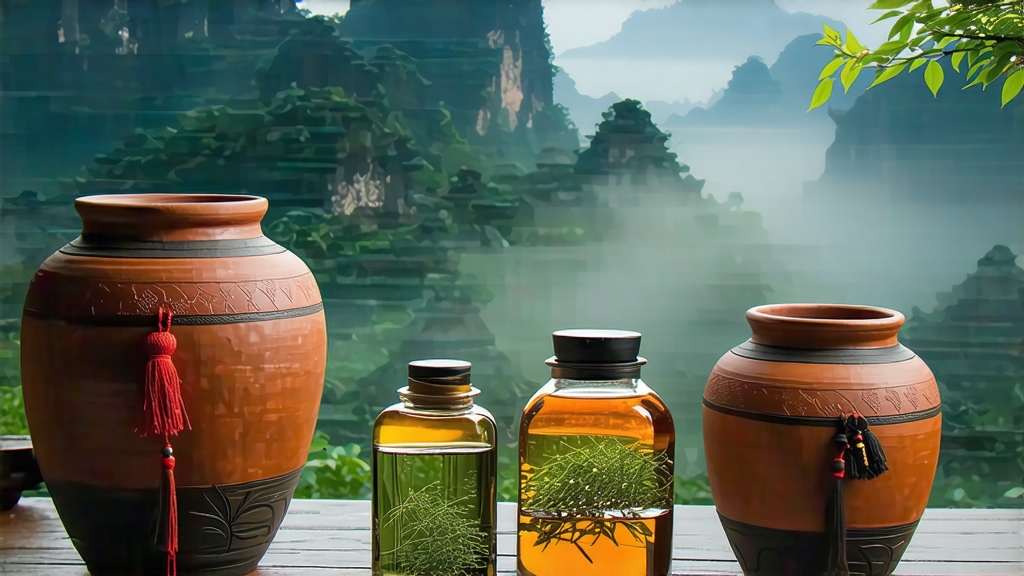
Liu Bao cha, literally “Six Forts tea,” is the southern sentinel of China’s dark-tea family. While Pu-erh grabs most headlines, Liu Bao has been quietly ferrying flavors, trade routes, and even sailors’ stomachs across centuries. Produced in the limestone fringes of Wuzhou, Guangxi, this tea carries the humid breath of the subtropical lowlands, the mineral kiss of karst water, and the imprint of human ingenuity that turns astringent leaf into velvet liquor. For international drinkers who think “dark tea” begins and ends with shou Pu-erh, Liu Bao offers a parallel universe—similar microbiology, yet a distinctly different soul.
History: From Frontier Currency to Maritime Provisions
The name “Liu Bao” first appears in Ming-dynasty tax registers, but its story accelerates during the Qing, when the Manchu court needed stable, compressible teas for the horse-tea trade with Central Asia. Compressed Liu Bao bricks traveled north on porter backs, lightening imperial silver coffers while filling Mongolian leather flasks. Simultaneously, the port of Guangzhou was booming; dockworkers stacked Liu Bao into the holds of clippers bound for Southeast Asia. There, tin miners in Malaya and rubber tappers in Sumatra discovered that Liu Bao settled queasy stomachs softened by rice wine and tropical fruit. By the 1930s, Cantonese medicine halls in Kuala Lumpur were prescribing aged Liu Bao for “damp-heat” and dyspepsia, cementing its reputation as a working-class tonic. World War II disrupted the trade, but the 1950s saw state-owned Wuzhou Tea Factory revive production, standardizing the now-famous “wet-pile” fermentation that gives Liu Bao its deep crimson liquor and betel-nut sweetness.
Micro-terroirs within One County
Purists divide Liu Bao into three micro-zones, each separated by a single mountain ridge yet oceans apart in flavor. The highest, Tiantang Shan (1,100 m), yields slow-growing leaves rich in amino acids; after aging, the tea develops orchid fragrance and a cooling, minty finish. Middle-elevation Dazhushan leaf is fleshier, delivering the classic “gan” sweetness that coats the throat like barley malt. Lowest, along the Xun River floodplain, the broad-leaf Assamica bushes soak up humidity, producing gutsy material prized for long-haul aging. Farmers often blend all three, aiming for a triangulation of aroma, body, and post-fermentation potential.
Craft: When Leaf Meets Steam, Pile, and Bamboo
Harvest begins under the Grain-In-Ear solar term, when three leaves and a bud still hold spring tension. After a brief outdoor withering, the leaf is wok-fired at 280 °C for eight minutes—just long enough to denature enzymes while preserving leaf integrity. The hot leaf is then rolled on bamboo trays until it “sweats,” a sign that cell walls have ruptured to release catechins and sugars. Next comes the defining step: wet-piling. Workers heap 3,000 kg of semi-dry leaf into a ventilated cement trough, spray it with karst spring water (pH 7.2), and cover it with jute sacks. Over the next 25 days, internal temperatures climb to 55 °C; thermophilic microbes—primarily Aspergillus niger and Blastobotrys adeninivorans—oxidize polyphenols into theaflavins and theabrownins, turning leaf from olive to umber. Unlike shou Pu-erh’s shorter, hotter piles, Liu Bao’s microbial spa is cooler and longer, explaining its smoother, less earthy profile. After piling, the tea is steamed, compressed into 50 kg bamboo baskets lined with wild taro leaves, and transferred to humid underground caves for a minimum of eighteen months. The taro leaves impart a subtle vanilla note, while the cave’s constant 85 % humidity encourages slow secondary fermentation, rounding off rough edges.
Compression Shapes: Brick, Basket, or Bird’s Nest
Traditional export grades were 37 × 23 × 4 cm bricks, easy to stack in ship galleys. Domestically, the “bird’s nest” shape—loose leaf twisted into a 6 g cup-sized nest—became popular in teahouses because it unfurls quickly under Cantonese kung-fu infusions. Today, boutique producers offer 100 g mini-baskets hand-bound